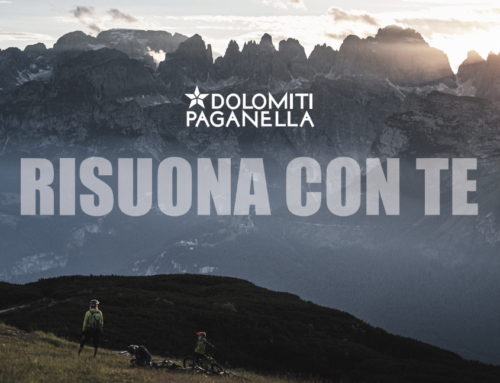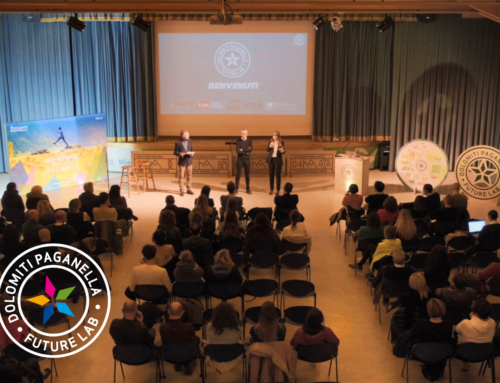Who are the new generations? What challenges does climate change pose for us? How to reconcile quality of life, business enterprise, and environmental protection? As we await the final event of the Dolomiti Paganella Future Lab, scheduled for 29 October, we asked some Altopiano della Paganella residents to give their own views about the 4 tough questions that underlie the project: the DNA of our holiday resort, new generations, climate change, and tourism in equilibrium.
- Who is Franco Nicolini?
I live in Molveno, I am a mountaineer and I have climbed many peaks around the world. To earn a living I became an Alpine Guide, taking tourists into our Brenta Dolomites, which I did for thirty years. Then ten years ago, together with my family I had the opportunity of running the famous Rifugio Pedrotti alla Tosa mountain hut, in the heart of the Brenta Dolomites. Our work involves hosting climbers and hikers, and in particular helping people to make best use of their days among these splendid peaks in complete safety. The hut has 150 bed spaces, and just getting there is a challenging excursion for average walkers, while it is an excellent starting point for major ascents in the Brenta range, including Cima Tosa at an altitude of 3170 metres.
- In addition to being a hut guardian and mountain guide, we know that you are very interested in the issue of sustainable tourism in the mountains. Could you tell us what your ideas are about this?
I think that sustainable tourism is mainly achieved by making visitors aware of their impact on the territory. When a tourist decides to come to our hut they are setting off on an adventure, and as such they can hardly expect all the conveniences they are used to in town. You need some spirit of sacrifice. For example, in the mountains water is increasingly scarce due to climate change and so it is not realistic to think you can take a 30 minute hot shower when you arrive here. Sometimes showers are not possible at all. But what harm does it do to go 2 or 3 days without a shower?
We are also aware that 150 people setting off from our hut can leave litter in the mountains. What you carry up in your rucksack must always go back down the same way, this is one of the basic rules.
Getting these concepts over to most of our guests is the most difficult task we have.

- From your perspective what is the biggest challenge our holiday resort has to overcome at the moment?
The tourism I dream of is 100% sustainable. Years ago I traversed the Alps without using any motorized transport, travelling on just my legs and a bicycle. This is the sustainable tourism I imagine!
People should travel as far as their legs will carry them. Cable cars provide transport for a lot of people, possibly not very capable, up to the high mountains. Seeing crowds of tourists on a summit is not good, it is not sustainable. If people walk then they spread out over the landscape based on how far their legs will go, and there is no overcrowding of any type. In tourist towns and villages we should ban motorized vehicles so that people are obliged to move on foot. Our legs, unlike cars, do not consume fuel, do not cost, and do not pollute.
- Talking about traffic, what do you think about the paradox that so many people come here on holiday to enjoy nature, but to do so they generate environmental pollution?
I see two possible approaches for resolving this paradox.
At our hut we have adopted an apparently financially penalizing system, but one that offers advantages as regards work management and the quality of service we can offer our guests. We have reduced the number of available bed spaces from 150 to 120.
To solve the traffic problems in our villages it would be good to exclude motorized vehicles. They do that in Switzerland: they have big car parks at the access points to some mountain resorts and you are obliged to leave your car. I know that our villages are not built on flat land like seaside resorts, but considering that we are in the mountains, those who choose to come here should be prepared to make a little effort. It might also help keep them in shape!
- Are there any other similar paradoxes that you think are worth mentioning?
Another problem is certainly the provision of services. Our villages have about 5000 inhabitants, but there are hundreds of accommodation and catering facilities. In summer and winter the number of people on the Altopiano della Paganella swells and the provision of services for tourists, and even for local residents, reaches a critical state. Solutions have to be found to avoid overloading our basic service infrastructure.
Listen to the second episode of the “FUTURO – La destinazione che sarà” podcast
70% of the Altopiano della Paganella residents who took part in the community survey conducted by the Dolomiti Paganella Future Lab sustain that to further improve the quality of life of residents and guests it is necessary, above all, to consider new forms of transport on the Altopiano. Could the solution be a traffic free Altopiano della Paganella? (audio in Italian only)
#2 Pillola dal Futuro
‘Pillole dal Futuro’ is an editorial project created to guide the community to the final event on October 29, a way to keep the discussion alive on the 4 tough questions of the Future Lab through the voice of some relevant figures of our destination. The six ‘pills’ were delivered to the homes of all residents during the summer months.








